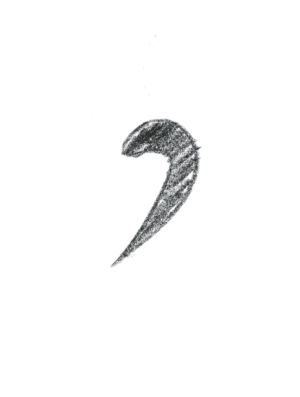The apostrophe is one of those pieces of punctuation that get a lot of people in trouble. It looks like a comma that hangs in the air rather than on the line and causes writers no end of confusion.
The apostrophe has three main uses: showing possession for a noun, showing the omission of some letters in a word, and showing plurality of single letters, single numbers, and acronyms.
Today, we’ll go over the basics of the first rule: creating possessive nouns. We humans love to collect things (just ask George Carlin). We pick stuff up wherever we go, and we want the world to know what belongs to us—especially when we write about it. Possessive nouns and pronouns show that ownership. Positioned correctly, that hanging comma shows you who owns what.
That’s Our Stuff
Let’s start with the easy bit: plural nouns. If the plural noun ends in an s, add an apostrophe:
boxes’ labels
The Brenners’ house
If the plural noun does NOT end in s (an irregular noun), you add apostrophe s:
children’s toy
women’s shoes
men’s coat
So far, so good. Now let’s look at singular nouns.
That’s My Stuff
Whether you use just an apostrophe or add an s to make a singular noun possessive depends largely on your style guide. Most singular nouns are made possessive with an apostrophe s; this is actually the base of the apostrophe rule and why most lessons start there:
Sean’s book
Some usage books and style guides will tell you to use an apostrophe s for all singular nouns, whether they end in s or not. Garner’s Modern English Usage and The Chicago Manual of Style use this rule:
James’s toy
The bus’s wheels
Plural nouns that have a singular meaning get just an apostrophe:
politics’ true meaning
economics’ forerunners
the United States’ policy on terrorism
A sibilant possessive (the noun ends in an /es/ sound) before the word sake gets just an apostrophe:
appearance’ sake
goodness’ sake
conscience’ sake
AP Stylebook is slightly different. Use apostrophe s for singular nouns and follow the same “use just an apostrophe” exceptions that Garner and Chicago outline. But AP wants you to follow two more exceptions. If you have a proper noun that ends in s or a singular noun that ends in s and is followed by a word that begins with s, you add just an apostrophe:
James’ toy
hostess’ seat
And if you’re following a completely different style guide, your best bet is to look up its rule.
Pronouns Are Different
If the noun is a personal pronoun, you don’t need to worry about the apostrophe at all, as English offers a complete set of possessive pronouns:
my/mine
your/yours
his, her/hers, its
our/ours
your/yours
their/theirs
Writers often get confused with its. If you see it’s, you’re dealing with a contraction: it is. If you see its, you’re dealing with a possessive pronoun.
You Mean There’s More?
As you start to pay attention to the apostrophe, you’ll see other situations that make you pause: compound words, joint possession, quasi-possessives, and more. I’ll cover these rules (and the other two uses) in a separate post.
A version of this article was originally published on The Writing Resource.
Get writing advice straight in your inbox.
Sign up for Right Touch Editing’s emails!



One thoughts on “Punctuation Point: Possessing the Apostrophe”